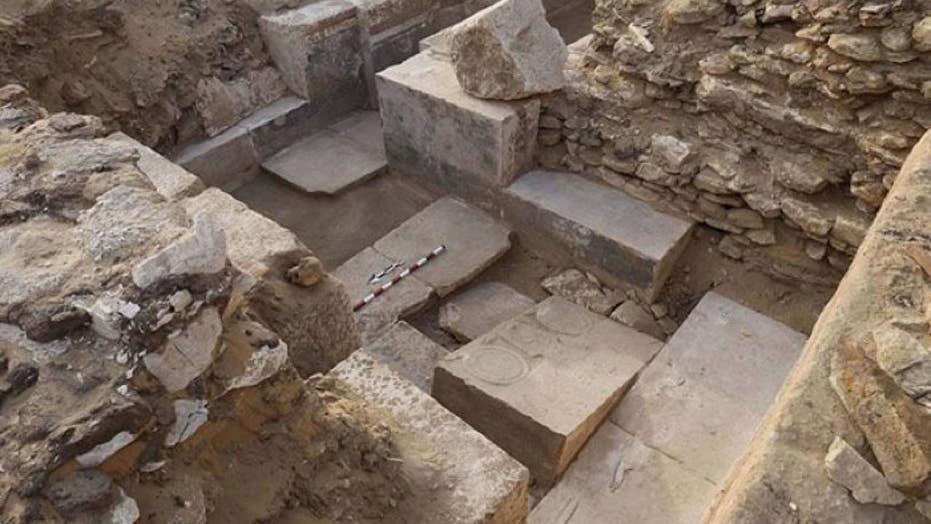Mummy of Pharaoh’s official discovered inside sarcophagus in Egypt
A mummy of a Pharaoh’s official was discovered inside of a limestone sarcophagus in Saqqara, Egypt.
The mummified remains of a high-ranking official named Khuwy were discovered in a colorful tomb that dates back 4,400 years. Archaeologists made the discovery in south Saqqara, in Egypt, the Egyptian Ministry of Antiquities announced April 2.
Next to the burial is a pyramid complex built for the pharaoh Djedkare Isesi, who reigned from 2381 to 2353 B.C. The colors of the tomb's hieroglyphs and decorations are incredibly well-preserved, despite the passage of over 4 millennia.
Hieroglyphs in the tomb list offerings and Khuwy's many titles, including "overseer of the khentiu-she of the Great House," "Great one of the ten of Upper Egypt" and "Sole friend" — titles that indicate he was a senior administrator in the pharaoh's court, said Emilie Martinet, a postdoctoral fellow in Egyptology with the Université Paul Valéry — Montpellier. While Martinet is not part of the team that made the discovery, her research focuses on the workings of ancient Egyptian administrations. [Photos: The Amazing Mummies of Peru and Egypt]
Pyramid inspired Design
Within the tomb complex, a descending corridor leads to a vestibule (an entrance area shaped like a hallway); an entranceway on the vestibule's southern wall leads to an antechamber with a drawing that shows Khuwy sitting in front of an offering table. Two entrances on the west wall of the antechamber lead to the burial chamber.
Inside that burial chamber, the archaeologists found the remains of a limestone sarcophagus that was robbed and almost destroyed in ancient times. The remains of the mummy of Khuwy was found in the same room. [Photos: Ancient Egyptian General's Tomb Discovered in Saqqara]
The design of the tomb complex is similar to chambers built underneath pyramids during Egypt's fifth dynasty period (2465 to 2323 B.C.), according to the statement.
More discoveries
The team, led by Mohamed Megahed, an archaeologist with the Egyptian Ministry of Antiquities, also investigated a pyramid located beside that of Djedkare Isesi, finding that it belonged to a queen named Setibhor. An inscription found on a column within the pyramid reads:
"The one who sees Horus and Seth, the great one of the hetes sceptre, the great of praise, king's wife, his beloved Setibhor."
While archaeologists had known about the existence of that pyramid, until now, they hadn't realized it had been built for the queen, the statement said.
"The large size of the pyramid complex of queen Setibhor and her title of [king's] wife indicate perhaps her direct intervention in helping her husband, king Djedkare [Isesi], ascend the throne of Egypt," according to a statement from the Czech Institute of Egyptology.
The team also conducted restoration work on the pyramid of pharaoh Djedkare Isesi.
- Photos: Discoveries at Wadi el-Hudi, an Ancient Egyptian Settlement
- Photos: 4,400 Year-old Tomb Complex in Egypt
- The 25 Most Mysterious Archaeological Finds on Earth
Originally published on Live Science.
Source: Read Full Article
